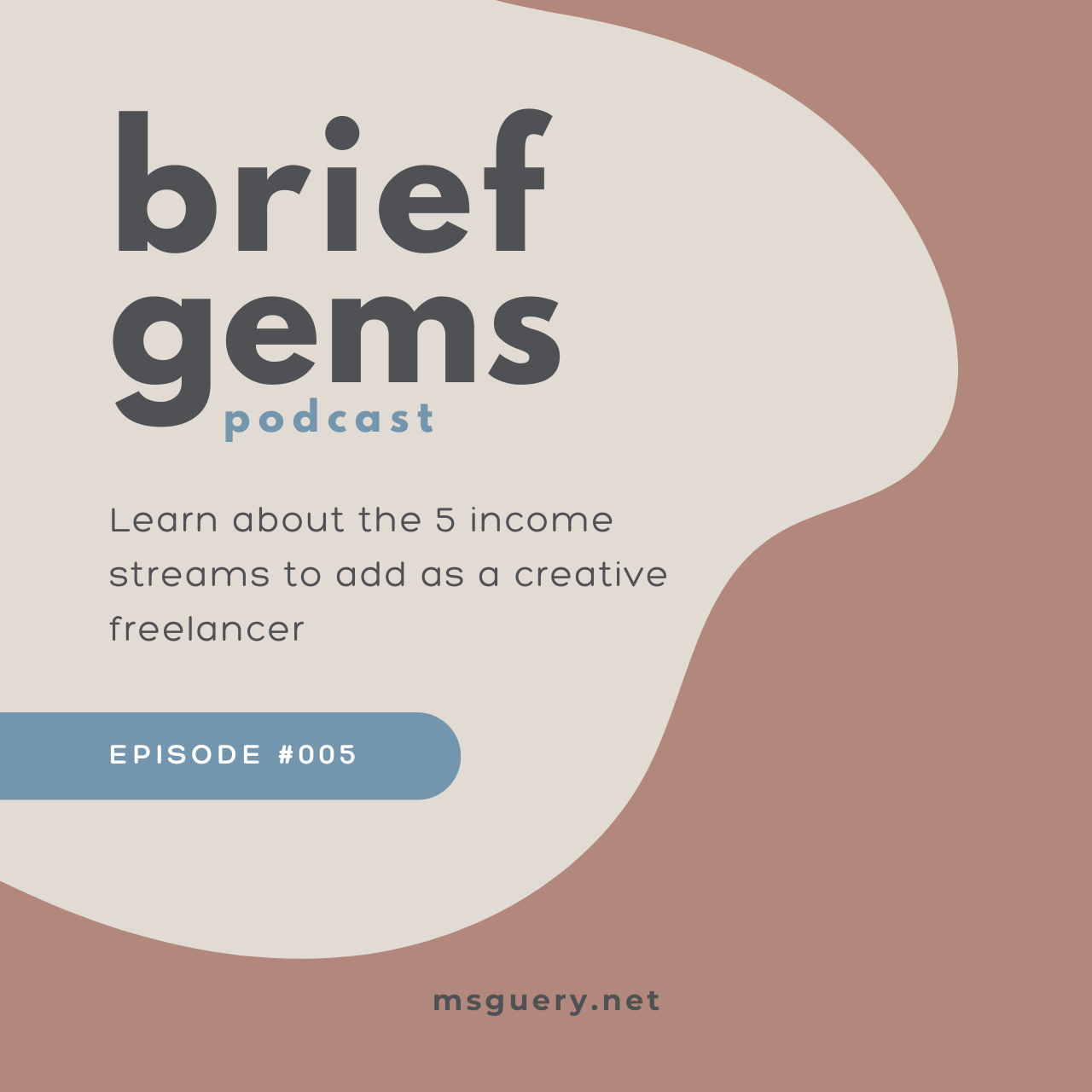
Available on Substack, Apple, Spotify, and YouTube.
Notes
In this video, I’m sharing five ways to earn income without depending on YouTube monetization, including subscriptions, affiliate marketing, digital products, and services.
Mentioned
Subscription Platforms: BuyMeACoffee, Ko-fi, Patreon, Substack
Affiliate Programs: Amazon Associates, Impact, CJ Affiliate, ShareASale, PartnerStack, Commission Junction
Digital Product Platforms: Shopify, Etsy, BuyMeACoffee, WooCommerce, Payhip, Gumroad, Udemy, Teachable, Kajabi
Service Platforms: Upwork, Fiverr, Contra, Wellfound, Craigslist, LinkedIn
Podcast Platforms: Spotify, Apple Podcasts, Substack
Daily Item: American millennials drive surge in freelancing as a side job
Transcript
Watch this on YouTube: https://youtu.be/e744_Xq5K-c
This post contains affiliate links, which means I may receive a commission (at no extra cost to you) if you make a purchase using one of my links. Thanks for your support!
Five Ways to Get Paid Without Being Monetized on YouTube
Having one source of income is not cutting it anymore. I know from experience that when you lose that one source, you’re out of luck if you don’t have a backup plan. So today, I’m sharing five ways to get paid without being monetized on YouTube.
1. Subscriptions, Memberships, and Donations (0:11)
With sites like BuyMeACoffee, Ko-fi, Patreon, and Substack, your subscribers can support you through donations and subscriptions, whether it’s monthly or yearly. You can also sell products, which I’ll go over later on.
If you have a podcast, you can set up subscriptions through Substack, Spotify, and Apple Podcasts and start accepting payments from there. You can provide perks like bonus content, a resource library, workshops, office hours, webinars, and ad-free content.
2. Affiliate Marketing (0:49)
Partnerships, referrals, affiliate programs, and networks or marketplaces are great ways to earn money. Examples include Amazon Associates, Impact, CJ Affiliate, ShareASale, PartnerStack, and Commission Junction.
Sign up as a partner, use referral links on your blog or website, and get a commission of up to 10% when someone clicks on the link and buys a product. You can also get commissions from Notion, SiteGround, and Bluehost.
For platforms like HoneyBook or Dubsado, new customers get a discount with your referral link. Set up the accounts, add your preferred payment methods like PayPal or your bank account, and you’ll start receiving payments. Remember to add a disclaimer or mention it in the description or video when sharing these links.
3. Ads and Sponsors (1:48)
You can add ads to your blog posts or any content. For example, on your podcast, mention at the beginning or middle “this episode is sponsored by” and the company’s name.
4. Digital Products (2:03)
Selling digital products is another option. Examples include online courses, templates from Notion, Asana, or Kajabi, ready-to-use social media posts from Canva, eBooks, workbooks, and stock photos.
Sell your products on your website, Shopify, Etsy, BuyMeACoffee, WooCommerce, Payhip, Gumroad, Udemy, or Teachable.
5. Providing a Service (2:32)
A key takeaway from an article from Daily Item says 3.2 million millennials (ages 28 to 43) are turning to freelancing, contracting, or consulting as a side gig, a rise of 60% since 2019. This is a perfect time to launch your services and gain extra income.

Monetize your skills with coaching, training, consulting, and contracting. For subcontracting, the client pays you, and then you hire a specialist like a WordPress designer to do the work.
If you want to step away from hourly work, consider productized services, which are done-for-you services with a flat fee. Clients see your offerings and price upfront, just like Netflix or Spotify. You can also offer recurring services or subscriptions, like monthly WordPress support, and VIP days or day rates.
5. Expanding Your Reach (4:04)

Set up a referral program for your products and services, similar to affiliate links. Your customers share their referral links, attracting more attention and paying both you and the customer. Create social media posts or pins with a caption to give them, which they can use to publish on their social media profiles.
Set up a freelancer profile on platforms like Upwork, Fiverr, Contra, or Wellfound, if you want to work with startups. You can also create an ad on Craigslist and add a service on LinkedIn. Promote your services on YouTube, your podcast, newsletter, and social media to generate leads.
One way to promote on YouTube is to publish a video sales letter, testimonial, case study, or portfolio project and use that as a featured video. Another way is to create a “work with me” playlist as the first thing people see when they check out your channel. Don’t forget to add the video or playlist as a call to action for your other videos.
Remember, those are third-party platforms that you don’t own. In my next post, I’ll share how I launched my website, podcast, and newsletter in less than two weeks and under $50, giving you control over your content and audience. Watch it on YouTube.
If you’re interested in knowing more, subscribe or follow. Or sign up at briefgems.substack.com to get the full transcript of every episode and for updates for when the next episode drops.
About
Hi, I’m Marjy! Digital Creator and Content Manager for creatives and online service providers. If you’re enjoying this post, here are other ways you can connect with me:
- Subscribe to my newsletter: I send actionable tips about marketing and online business every other Tuesday. Join the list here.
- Let’s work together: I help creators and online service providers with digital marketing and software support. I also have Clarity Call sessions if you need help organizing your thoughts. Learn more about my services here.
- Read Blog | Brief Gems podcast | YouTube | Instagram | Contact
